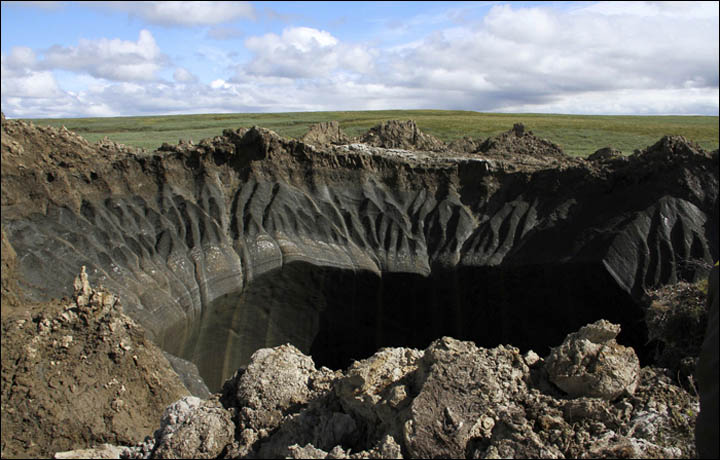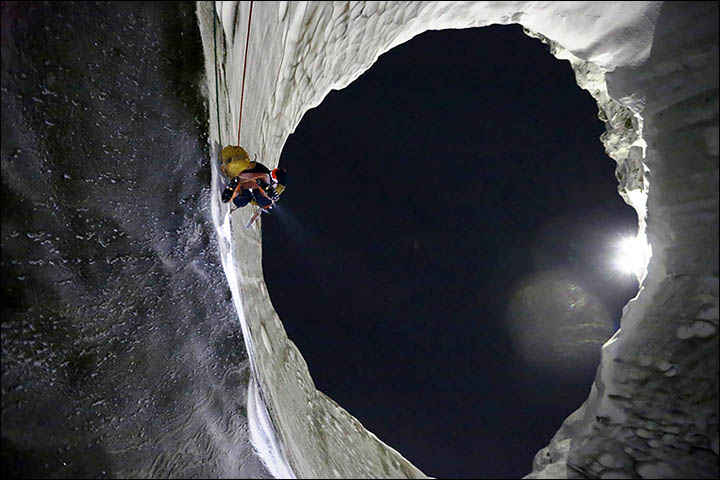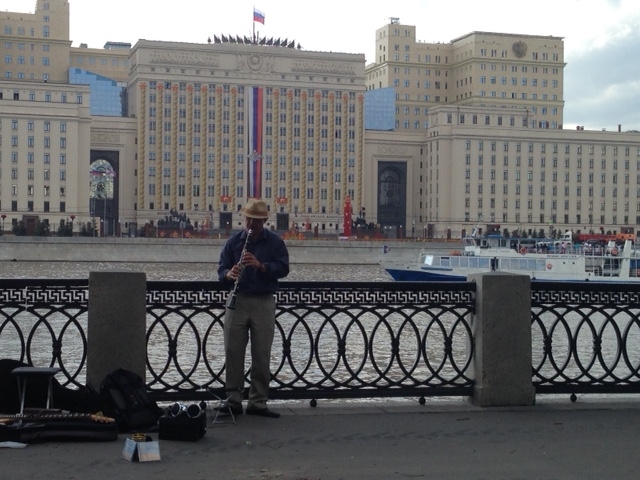The End Of The World
This Planet made two episodes about these Siberian craters because, if you like weird stories, there’s a lot to like about these craters.
1. I <3 craters
• HUGE COOL-LOOKING HOLES IN THE GROUND of mysterious origin.
Discovered in the Russian arctic last summer, most scientists think they were created by exploding methane. As an article in The Guardian put it:
“As the ice melts, methane gas is released, which builds up pressure until an explosion takes place, leading to the formation of a crater.”
But like the proverbial tree falling in the forest, no one was there when the craters formed, and there are no recordings of their creation. So no one is really sure what caused them.
• SCARY GREENHOUSE GAS. One sure thing is that there was methane in these holes before they opened up. They may (or may not) have been caused by melting permafrost due to global warming, and they may (or may not) be contributing to climate change by releasing large amounts of methane from the melting permafrost. It’s easy to get scared by methane: this 11-minute film Last Hours by Green World Rising, explaining what methane released by melting permafrost could do, will keep you up at night:
Scientists are worried too, because methane and other gasses trapped in permafrost pack 25 times the climate-warming power of carbon dioxide - and the frozen regions of the world have a lot of it:
• OUTSIDER APPEAL. Besides a couple articles in The Washington Post and The National Geographic, a rather ridiculous story on CNN and a few sensationalized YouTube videos, the story of the craters is not yet well known here in the US. But any story that takes place in Russia has a certain outsider appeal. More on this below.
2. Russia, America, Science
The mysterious craters aren’t very well known in the US, probably because we Americans never pay much attention to stories that don’t star Americans. The heroes of this story are Russian scientists, who are the ones climbing down into the craters in the dark Siberian winter. On top of that, the US is in an argument with Russia right now. Apparently we are heading back to the cold war, as The Economist's KAL's cartoon illustrates:
Our impression is that Russians are less concerned about climate change than other Europeans and Americans, as described in an Open Democracy Russia article by Dr Maria Sharmina and Dr Christopher Jones of the University of Manchester, UK:
“… we keep hearing that climate change might actually be good for Russia. There is a view that it will benefit the country through a shorter winter season, better temperatures for growing food, and more accessible oil and gas in the Far North…The government has taken a few steps towards a lower-carbon future: it has signed up to the global 2°C emissions pledge and adopted the Climate Doctrine and the Renewable Energy Decree. However, Russia’s other policies contradict its climate change commitments, including generous subsidies for the production of fossil fuels.”
Indeed, as this graph shows, Russia has deployed less renewable energy resources than most developed countries, and its use of solar and wind energy is nearly nil.
Our interviews with Russian scientists in Moscow recently revealed the differences in our outlooks on climate change. None of the Russian scientists were “climate-deniers,” but some of their views were more optimistic about the outcome, at least for their country.
Professor Vasily Bogoyavlensy, Deputy Director of the Russian Academy of Science's Oil and Gas Research Institute, is featured in these videos. He is a scientist with a reverence for proof, who agrees that human use of fossil fuel is warming the planet. But beyond that, a stark division in perspectives is clear.
• Dr. Bogoyavlensy subscribes to the hypothesis that an ice age is beginning, which will dwarf the effects of human-created warming.
• He muses about one theory, that more CO2 will mean more trees will grow faster, offsetting the effects on the atmosphere.
• And in Part 2 of our series, the Professor appears to take comfort in the idea that Russia can weather the rising seas (despite the fact that St. Petersburg will be inundated). He says that Russia can afford to lose some of the permafrost on which many Siberian towns are built.









